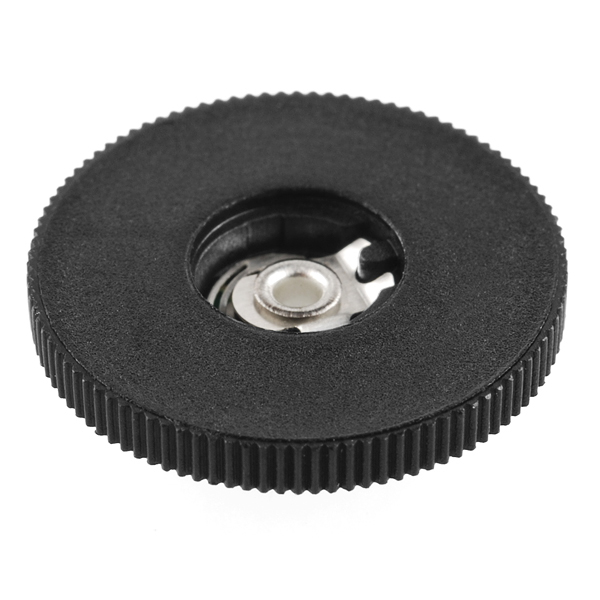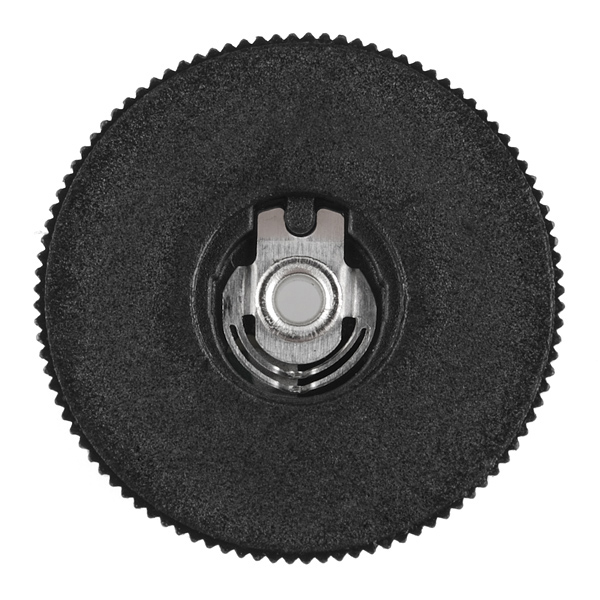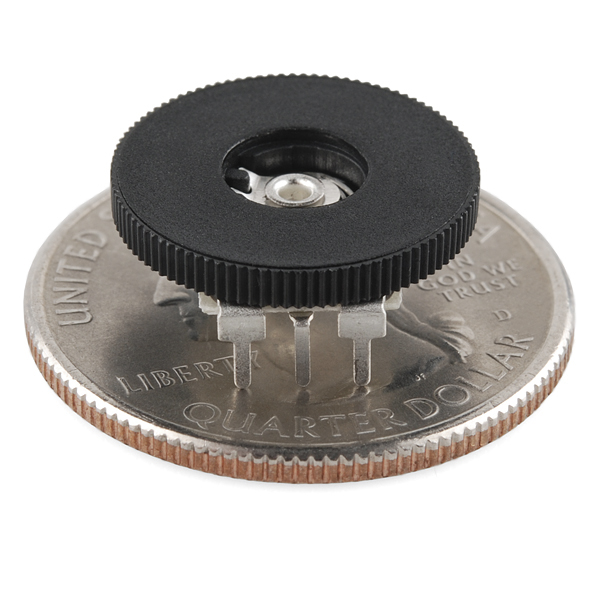Thumbwheel Potentiometer - 10k Ohm, Linear
Thumbwheel potentiometers are really handy when you don't have space on your enclosure for a knob and you still need access to a tuning or volume control. These 10k ohm linear potentiometers will mount into standard 0.1" pitch proto-boards.
Thumbwheel Potentiometer - 10k Ohm, Linear Product Help and Resources
Core Skill: Soldering
This skill defines how difficult the soldering is on a particular product. It might be a couple simple solder joints, or require special reflow tools.
Skill Level: Noob - Some basic soldering is required, but it is limited to a just a few pins, basic through-hole soldering, and couple (if any) polarized components. A basic soldering iron is all you should need.
See all skill levels
Comments
Looking for answers to technical questions?
We welcome your comments and suggestions below. However, if you are looking for solutions to technical questions please see our Technical Assistance page.
Customer Reviews
No reviews yet.





Does anybody know a source to get a 1M Ohm version of this thumb-wheel? Ideally from US. Thank you.
I accidentally discovered that these pots can give off a pleasant orange glow from near the center. I had accidentally put 5V across the center pin & one other pin, and then turned the knob all the way to one end. (In future I will stick to LEDs for my lighting needs, because they smell better when lit.)
That gave me a morning chuckle. Glad I'm not the only one frying parts.
Are these in the SparkFun eagle library? Maybe another way to ask this question: are these used in an SparkFun product? If so, I can look at its eagle files for the footprint...
I was hoping these would snap into breadboards. The spacing is right, but the pins are just a little bit too short.
"Proto-boards" in the description means through-hole.
If you have a fairly good hand with a soldering iron, and stable mini-vise or similar holder for the pot; you can fix this by soldering clipped leads from through-hole parts or very short pieces of solid wire (~24 AWG) to the inner side (relative to the pot as a whole) of the pins.
Is it possible to substitute a Slide Pot - Small (10k Linear Taper): https://www.sparkfun.com/products/11620 for this thumbwheel potentiometer?
Yep - they're essentially the same thing ( 10k Ohm, linear taper ), just a different form of actuation (linear motion vs rotational motion). Your application may matter, however - a slide pot only goes from minimum to maximum as it physically just ends at those two extremes. A rotational pot can sometimes continue to be turned so that it goes from maximum to minimum (or the other way around) instantly. This particular model has a slight detent to prevent that from happening easily, but if I recall correctly you could accidentally force it past that.
Would I be able to use this with the Mono Audio Amp Breakout - TPA2005D1, instead of the Trimpot 10K with Knob that is suggested?
I'm looking for a thumbwheel pot like this in 100k. I can't find another distributor of this brand. Any chance you could carry them if available?
How much force does it take to turn this potentiometer?
Do these have positive stops at increments (clicks to keep it from free spinning) ? The rear photo kind of looks like it does.
I really wish they would get these back in stock :/
This should be great for DIY HOTAS, you can use it as trimm for aircraft or flaps... at least for me that i'm right now focused on build my own HOTAS XD...
These directly Arduino friendly?
Yep, connect it like you would any other potentiometer.
A single gang potentiometer like this is no good for stereo volume control (only one channel!). It took weeks to source a dual gang pot still in production.
correct, and they're linear too, which isn't right for audio.
But they are fine if they interface with a micro that subsequently adjusts a dual left/right DAC or some such...
That's what I was thinking, if a person's project already uses a microcontroller they should be able to control multiple channels and map this pot's resistance to a log scale. Just a bit of lateral thought and some extra lines of code is all that is required to make this a suitable volume control for something like an Arduino playing MP3s or other digitally recorded sounds.
yep, this is true. but as a volume attenuator, it wouldn't be great.